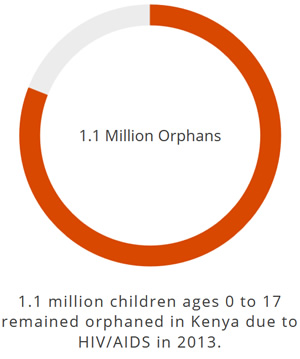

While the number of AIDS-related deaths has declined (32% in Kenya between 2009 and 20131), the UN estimates that 1.1 million children ages 0 to 17 remained orphaned in Kenya due to HIV/AIDS in 20132.
 |
The World Bank recognizes that “education is one of the most powerful instruments for reducing poverty and inequality and lays a foundation for sustained economic growth3.
A Pathways Out of Poverty study states that improving the education of community members is one of the most important safety nets required by poor households in western Kenya4.
In western Kenya, access to effective education is limited, leaving many children with little or no hope for a fruitful future. Support services for AIDS orphans are virtually non-existent. Their desperation is overwhelming. Before Nambale Magnet School, a child confided that she thought suicide might be the only solution to the problems of her life.
The Nambale Magnet School is the first residential and educational facility of its kind to address these issues in the Nambale District, where an estimated 10,000 children have been orphaned by the AIDS crisis. The school helps children who have at least modest extended family support; it offers a model of effective intervention and frees up civic resources to address the systemic issues.
1http://www.unaids.org/sites/default/files/media_asset/UNAIDS_Gap_report_en.pdf
2http://mdgs.un.org/unsd/mdg/SeriesDetail.aspx?srid=622&crid=404
3http://data.worldbank.org/topic/education
4http://www.fao.org/ag/againfo/programmes/en/pplpi/docarc/wp14.pdf
WIKS-USA, Inc. is dedicated to the success of orphans and other vulnerable children (OVCs) in rural Kenya, by providing financial and technical assistance for their education, shelter and emotional support at the Nambale Magnet School.

all materials copyright © 2025
WIKS-USA